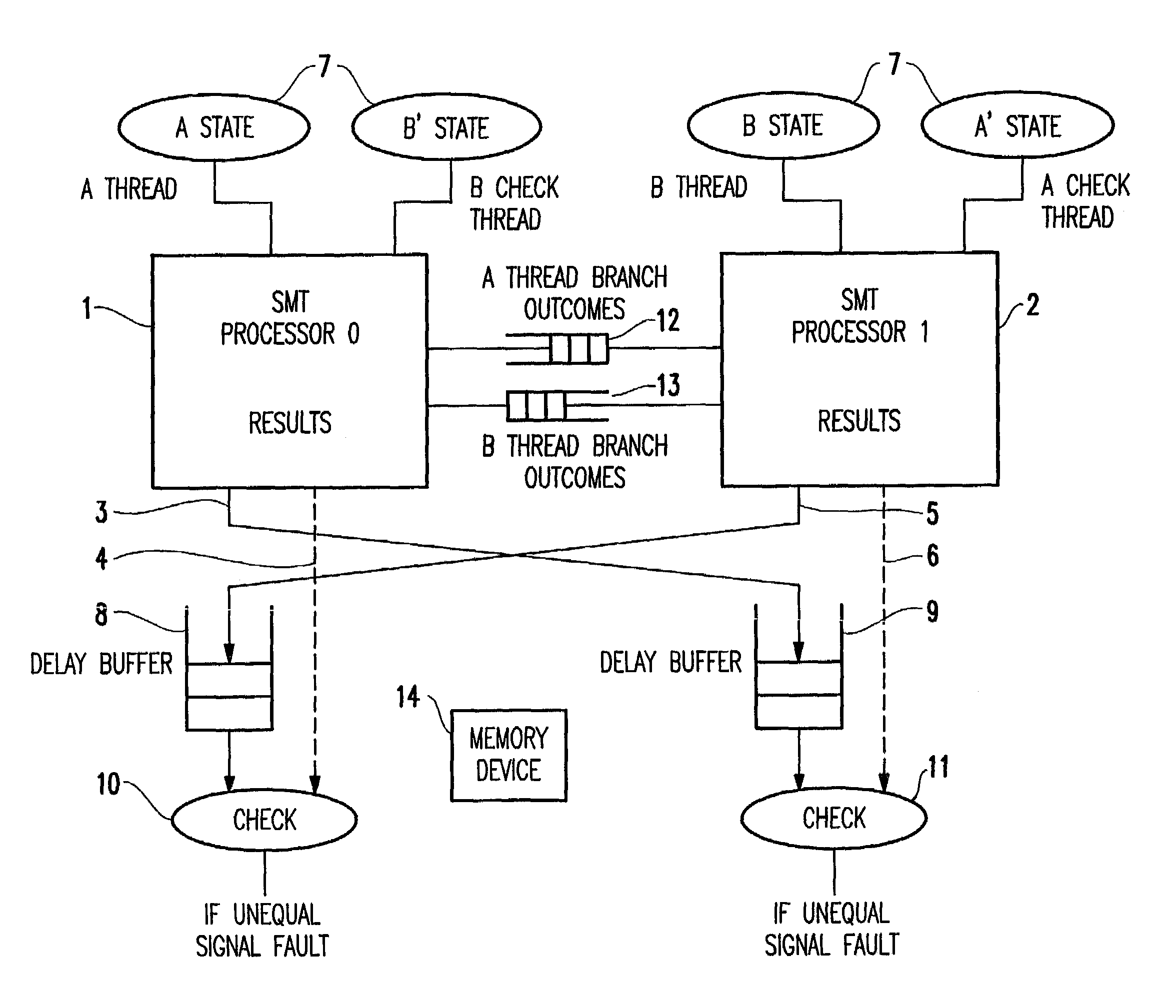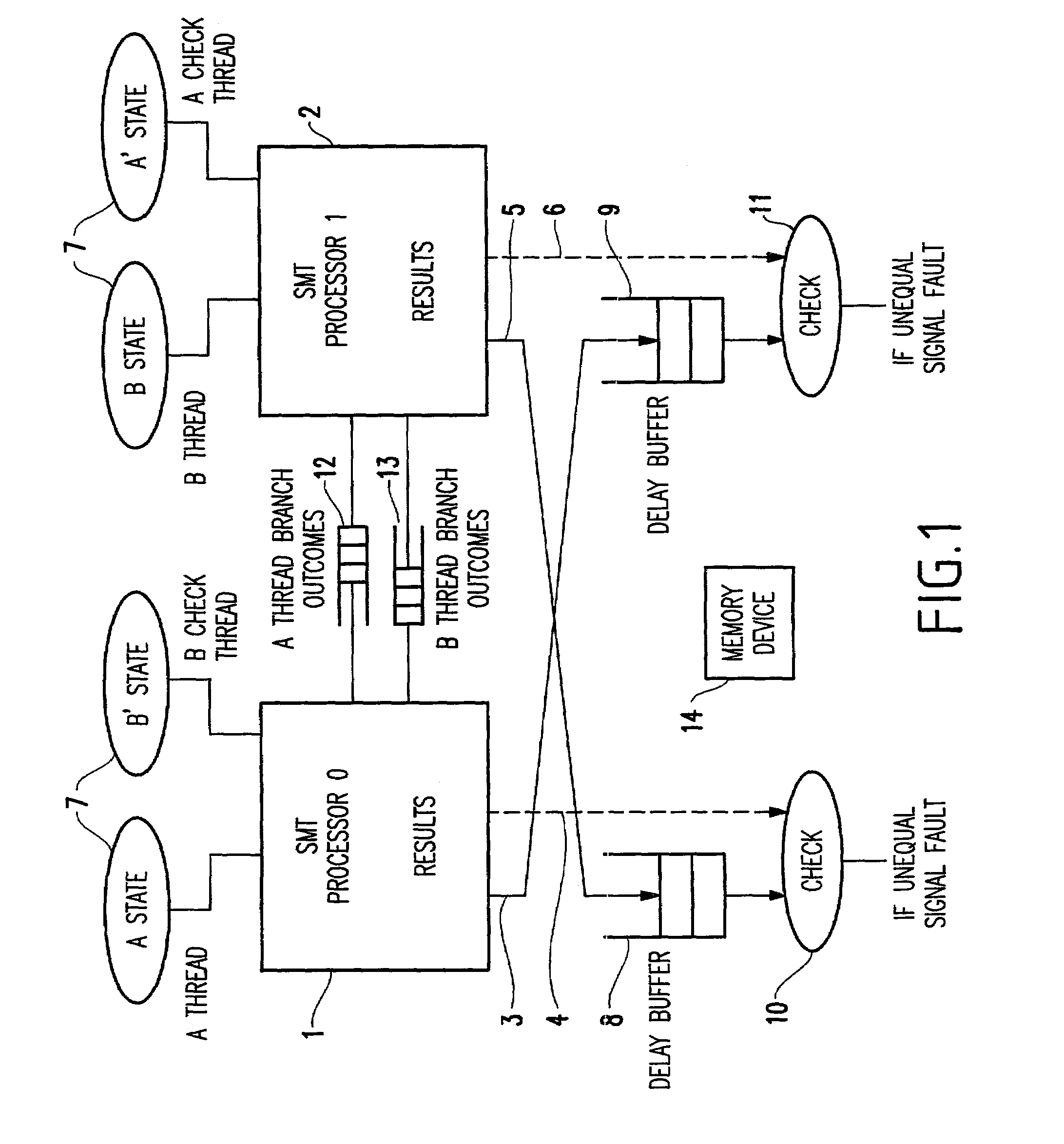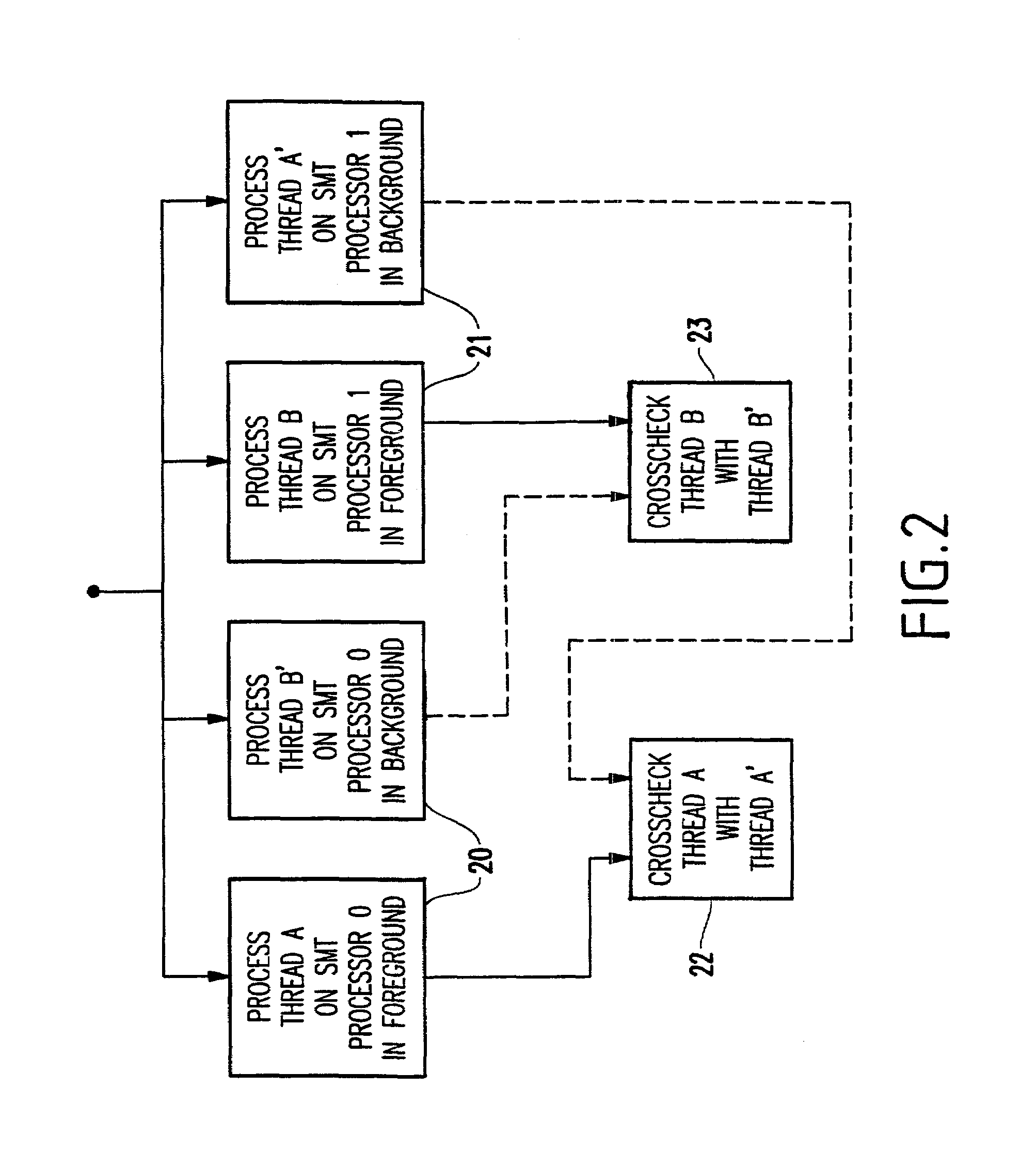Method and apparatus for fault-tolerance via dual thread crosschecking
a dual-thread cross-checking and fault-tolerance technology, applied in error detection/correction, instruments, computing, etc., can solve the problem of two complete processors required for the execution of one thread, and achieve the effect of high fault coverage, low performance loss and high reliability
- Summary
- Abstract
- Description
- Claims
- Application Information
AI Technical Summary
Benefits of technology
Problems solved by technology
Method used
Image
Examples
Embodiment Construction
[0025]Referring now to FIG. 1, processors are illustrated which can be constructed with support for two simultaneous threads, and such that one thread be given higher priority over the other. Hence, the higher priority (foreground) thread can proceed at (nearly) full speed, and the lower priority thread (background) will consume whatever resources are left over. It is noted that the foreground thread may occasionally be slowed down by the background thread, for example, when the background thread is already using a shared resource that the foreground thread needs.
[0026]As further illustrated in FIG. 1, for exemplary purposes only, SMT processors 1, 2 are paired in this discussion, with interconnections between the paired processors for checking, as shown in the figure. Although FIG. 1 shows only two processors, a person of ordinary skill would readily see that the number of processors or number of threads could be increased.
[0027]The two types of threads are represented by the solid...
PUM
 Login to View More
Login to View More Abstract
Description
Claims
Application Information
 Login to View More
Login to View More - R&D
- Intellectual Property
- Life Sciences
- Materials
- Tech Scout
- Unparalleled Data Quality
- Higher Quality Content
- 60% Fewer Hallucinations
Browse by: Latest US Patents, China's latest patents, Technical Efficacy Thesaurus, Application Domain, Technology Topic, Popular Technical Reports.
© 2025 PatSnap. All rights reserved.Legal|Privacy policy|Modern Slavery Act Transparency Statement|Sitemap|About US| Contact US: help@patsnap.com



